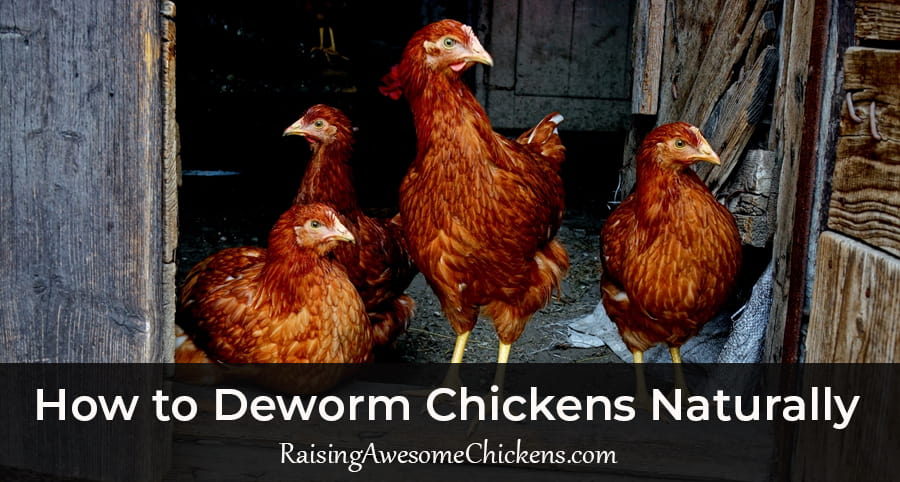Last Updated on February 19, 2024 by AwesomeChickens
Table of Contents
Introduction
Introducing new chickens to an existing flock can be a delicate process, but with the right approach, it can be a successful and rewarding experience. However, there are a few problems that you need to avoid in order to maintain harmony within the flock. Firstly, ensure that you quarantine new chickens for a minimum of 30 days before introducing them to prevent the spread of diseases. Additionally, carefully observe the flock dynamics and introduce new birds gradually, preferably during the evening when they are more calm. Provide enough space, food, and water sources to avoid competition and minimize aggression. Lastly, adding new chickens can enhance the value of your flock by introducing genetic diversity and maximizing egg production. With proper precautions and patience, your flock can thrive with the addition of new members.
Introducing new chickens to an existing flock is an important and exciting process for poultry enthusiasts. It not only expands the flock but also brings valuable benefits like increased egg production and social dynamics within the group. However, introducing new chickens can also be challenging if not done properly. To ensure a successful integration, it is crucial to follow a step-by-step guide. This guide will help you understand the key aspects of preparing for the introduction, gradually introducing the new chickens, monitoring their integration, and ensuring long-term care. By following this guide, you can create a harmonious and thriving flock that will bring joy and productivity to your poultry endeavors.
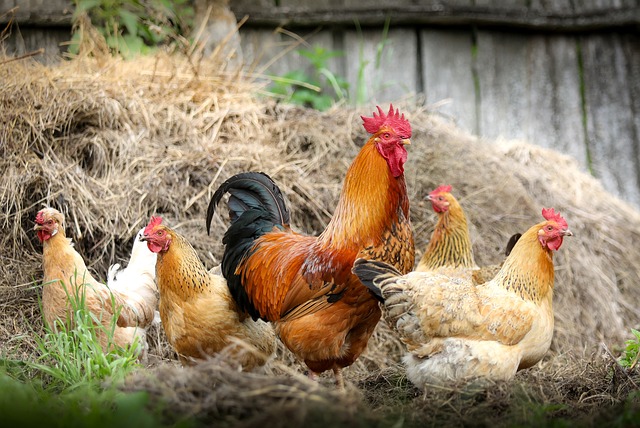
Importance of introducing new chickens to an existing flock
Introducing new chickens to an existing flock is crucial for several reasons. Firstly, it allows for the expansion of your flock, which can increase egg production and overall productivity. Secondly, it helps to maintain a healthy social dynamic among the chickens, preventing loneliness and potential behavioral issues. Additionally, introducing new chickens can infuse new genetic traits into the flock, ensuring genetic diversity and improving the overall health of the flock. However, it is important to approach this process with care and patience to avoid any potential problems or conflicts. By following the right steps and monitoring the integration process, you can seamlessly introduce new chickens to your existing flock and reap the benefits.
Benefits of a successful integration
A successful integration of new chickens into an existing flock brings several benefits. Firstly, it helps to expand the flock, increasing the overall productivity of the group. More chickens mean more eggs or meat for the owners. Additionally, introducing new chickens can refresh the gene pool, which can lead to healthier and more resilient birds. Integration also promotes socialization and reduces the risk of aggression within the flock, creating a harmonious and happier environment for all the chickens. Lastly, successful integration allows for the sharing of knowledge and experiences among the chickens, fostering a sense of community and collective growth.
Step 1: Preparing for the Introduction
Before introducing new chickens to an existing flock, it is crucial to make proper preparations. First, assess the space available in the coop to ensure there is enough room for the new additions. Understanding the existing flock’s pecking order is essential to anticipate potential conflicts during the integration process. Additionally, it is recommended to quarantine the new chickens to prevent the spread of diseases. This step helps evaluate and treat any health issues before introducing them to the existing flock. By taking these preparatory steps, you can ensure a smoother integration and minimize the chances of problems arising with the new chickens and the existing flock.
Assessing the space and resources available
When introducing new chickens to an existing flock, it’s crucial to assess the space and resources available. Chickens require ample space to roam, forage, and establish their territory. Make sure your coop and outdoor area can accommodate the increased population without causing overcrowding or stress. Additionally, assess the availability of nesting boxes, perches, and feeding stations to ensure there are enough for all chickens. Adequate resources will prevent competition and minimize potential conflict among the flock. By considering the space and resources beforehand, you can create a comfortable and harmonious environment for both the existing and new chickens.
Understanding the pecking order
Understanding the pecking order is crucial when introducing new chickens to an existing flock. Chickens have a hierarchical social structure, and establishing a pecking order helps maintain order and minimize conflict. The pecking order determines the social rank of each chicken within the flock, with the dominant birds having higher status. When introducing new chickens, it is important to be aware of the pecking order dynamics. The existing flock may assert their dominance over the newcomers, which could lead to some aggression or bullying. By understanding the pecking order and its implications, you can better manage the integration process and ensure a smoother transition for all the birds involved.
Quarantine procedures for new chickens
When introducing new chickens to an existing flock, it is crucial to follow quarantine procedures. Quarantining new chickens helps to prevent the spread of diseases and parasites to the existing flock. Create a separate area for the new chickens, ideally in a different location to ensure complete isolation. Keep them under observation for at least two to three weeks, monitoring their health and behavior. During this period, make sure to provide them with proper food, water, and shelter. This quarantine period allows you to identify any potential health issues and address them before integrating the new chickens with the existing flock, ensuring the overall well-being of your entire flock.
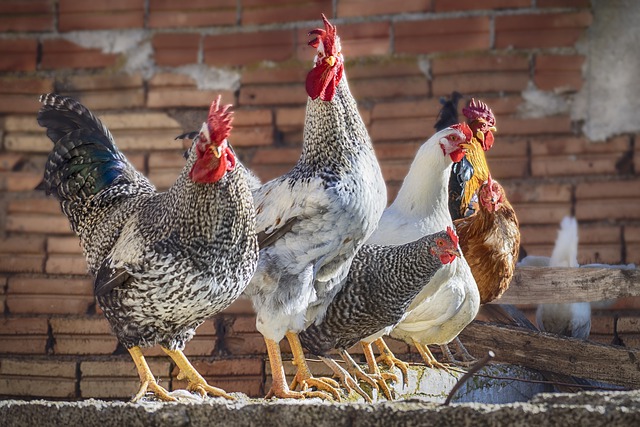
Step 2: Gradual Introduction
Once you have prepared the space and resources for the new chickens, it’s time to gradually introduce them to the existing flock. This step is crucial to minimize any conflicts or aggression among the birds. Start by introducing the new chickens to the coop environment, allowing them to explore and get acquainted with their surroundings.
It is recommended to use a separate enclosure or fence off an area within the coop for the new chickens. This will provide a safe space for them to interact with the existing flock while reducing the risk of direct confrontation. During this stage, it is important to closely supervise their interactions and address any signs of aggressive behavior. Patience is key during the gradual introduction process to ensure a successful integration of the new chickens into the existing flock.
Introducing new chickens to the coop environment
Introducing new chickens to the coop environment is a crucial step in successfully integrating them into an existing flock. It is important to allow the new chickens to become familiar with their surroundings gradually. This can be done by either using a separate enclosure or fencing off a specific area within the coop. By doing so, the new chickens can observe and interact with the existing flock in a controlled manner. Supervision during the initial interactions is necessary to prevent any aggressive behavior or conflicts. Gradual introduction helps establish a positive social dynamic within the flock and increases the chances of a successful integration.
Utilizing a separate enclosure or fencing off an area
When introducing new chickens to an existing flock, it is crucial to utilize a separate enclosure or fence off an area. This step helps prevent immediate conflicts and allows the chickens to get familiar with each other without direct contact. By creating this physical barrier, it provides a controlled environment for the new and existing birds to observe and interact with each other safely. The separation allows them to establish a hierarchy and minimizes the chances of aggression and pecking order disputes. Through this gradual introduction, the chickens can become accustomed to each other’s presence, increasing the success of their integration into the flock.
Supervising the initial interactions
Supervising the initial interactions between new and existing chickens is crucial for a successful integration. By closely observing their behavior, you can identify any signs of aggression or conflict. Keep an eye out for excessive pecking, chasing, or bullying. If any aggressive behaviors are observed, it’s important to intervene promptly to prevent injuries. Providing distractions such as treats or toys can help redirect their focus and reduce tension. It’s advisable to supervise the interactions for several days or weeks until the chickens establish a pecking order and become more comfortable with one another. With proper supervision, you can help ensure a smooth and harmonious transition for your flock.
Step 3: Integration and Monitoring
Integration and monitoring are crucial steps in successfully introducing new chickens to an existing flock. During this stage, it is important to allow supervised contact between the new and existing flock, while closely observing their behavior. Signs of aggression or conflict should be carefully monitored, and if necessary, birds can be separated temporarily. This step helps establish a pecking order and social dynamics within the flock. By gradually integrating the birds and providing them with equal access to food and water, the flock will learn to coexist harmoniously over time. Regular monitoring and intervention as needed ensure a smooth integration process.
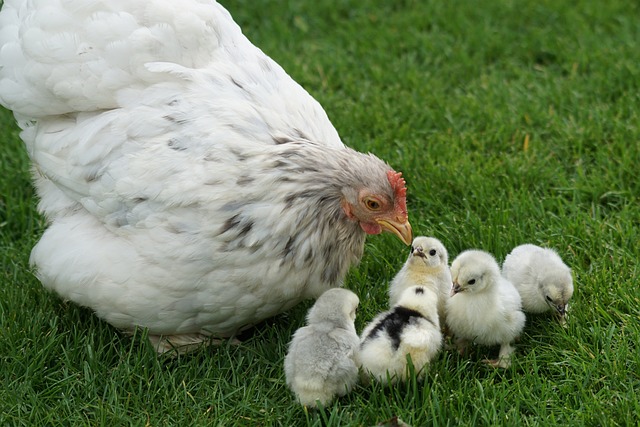
Allowing supervised contact between the new and existing flock
When introducing new chickens to an existing flock, it is crucial to allow supervised contact between the new and existing birds. This step is important for them to become familiar with each other and establish the pecking order. By closely monitoring their interactions, you can intervene if any aggression or conflict arises. This supervised contact helps in minimizing potential harm and stress on both sides. It also allows the birds to gradually adjust to each other’s presence and create a more harmonious flock. Remember, patience and observation are key during this stage to ensure a successful integration process.
Signs of aggression or conflict to watch out for
When introducing new chickens to an existing flock, it is important to keep an eye out for signs of aggression or conflict. These can include aggressive pecking, chasing, or sparring between the new and existing birds. It is also crucial to observe any injuries or distress among the chickens. If you notice persistent bullying, injuries, or signs of extreme stress, it may be necessary to separate the birds temporarily and reintroduce them gradually. Monitoring the flock closely during this integration process will allow you to address any conflicts promptly and ensure a smooth transition for all the chickens involved.
Separating birds if necessary
In the process of introducing new chickens to an existing flock, it is important to be prepared for any conflicts or aggression that may arise. If necessary, separating birds can help prevent injuries and allow the new chickens to adjust at their own pace. This can be done by using temporary barriers or creating separate enclosures within the coop. By providing a safe space for the birds to interact without direct contact, you can closely monitor their behavior and gradually reintegrate them when they show signs of acceptance. Separating birds when necessary ensures the well-being and successful integration of the entire flock.
Step 4: Final Integration
Once you have observed positive behavior and interactions between the new and existing flock, it is time to proceed with the final integration. Monitor the flock’s behavior over time to ensure they are getting along harmoniously. Remove any physical barriers that were initially used to separate them, allowing the chickens to interact freely. Make sure there is equal access to food and water sources to prevent competition and aggression. Regular health check-ups for the entire flock are essential to detect and address any health issues promptly. Additionally, pay attention to any social dynamics issues that may arise and take appropriate action to maintain a peaceful and productive flock.
Monitoring the behavior of the flock over time
Monitoring the behavior of the flock over time is a crucial aspect of successfully introducing new chickens to an existing flock. By observing their interactions, we can identify any signs of aggression, bullying, or other behavioral issues. It is important to keep an eye out for any hen-pecking, excessive chasing, or feather picking, which can indicate trouble within the flock. Regular monitoring allows us to intervene if necessary, by separating birds or taking other appropriate actions to maintain peace and harmony. By being vigilant and proactive, we can ensure the well-being of all the chickens and promote a positive and productive environment for the entire flock.
Removing physical barriers
Once the new chickens have been successfully integrated into the existing flock, it becomes important to remove any physical barriers that were initially used to separate them. This step helps to facilitate free movement and interaction between all chickens. By removing the physical barriers, the chickens have the opportunity to establish their own social dynamics and develop a sense of hierarchy within the flock. It is important to monitor their behavior closely during this transition period to ensure that there are no signs of aggression or conflict. Overall, removing physical barriers is a key step towards creating a harmonious and cohesive flock.
Ensuring equal access to food and water
Ensuring equal access to food and water is crucial when introducing new chickens to an existing flock. It helps prevent conflicts and ensures the well-being of all the birds. Provide multiple feeding and drinking stations to avoid overcrowding and competition. Make sure that these stations are easily accessible and spread out within the coop or run. Regularly monitor the feeding and drinking behaviors of each chicken to ensure that all are getting their fair share. Adjust the quantity and location of food and water sources if necessary. By promoting equal access, you create a harmonious environment where all chickens can thrive together.
Step 5: Long-term Care and Management
Once you have successfully integrated the new chickens into your existing flock, it is important to continue providing them with the care they need for long-term health and well-being. Regular health check-ups for the entire flock are crucial to identify any potential health issues early on. Additionally, it is important to keep a close eye on the social dynamics within the group. Address any conflicts or bullying behaviors promptly to maintain a harmonious and productive flock. By consistently monitoring and addressing the needs of your chickens, you will ensure a happy and thriving flock for years to come.
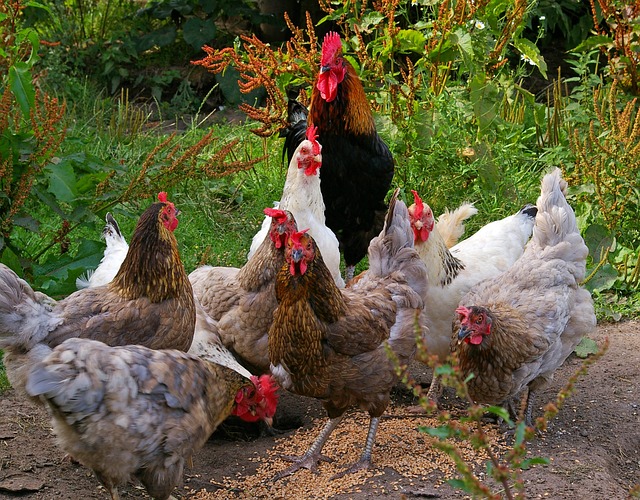
Regular health check-ups for the entire flock
Regular health check-ups are essential for the overall well-being of your entire chicken flock. By conducting routine checks, you can detect any signs of illness or disease early on, allowing for prompt treatment and prevention of potential outbreaks. During these check-ups, observe their behavior, examine their feathers, comb, and feet for any abnormalities, and ensure they are eating and drinking properly. Additionally, conduct regular parasite control measures and keep their living area clean and sanitized. Investing time and effort into the health of your flock will contribute to their long-term productivity and happiness.
Identifying and addressing any social dynamics issues
In the process of introducing new chickens to an existing flock, it is crucial to identify and address any social dynamics issues that may arise. Chickens have a social hierarchy, known as the pecking order, and the introduction of new birds can disrupt this delicate balance. Signs of social dynamics issues include aggression, excessive pecking, and bullying. By closely monitoring the flock, observing their interactions, and stepping in when necessary, you can prevent conflicts from escalating. Addressing social dynamics issues ensures a harmonious living environment for the entire flock, fostering a sense of comfort and well-being for each chicken.
Maintaining a harmonious and productive flock
Maintaining a harmonious and productive flock is essential for the overall well-being of your chickens. To achieve this, it is important to continue monitoring the behavior and interactions among the chickens even after they have been successfully integrated. Regular health check-ups for the entire flock should also be implemented to catch any potential health issues early on. Additionally, identifying and addressing any social dynamics issues that may arise is crucial to maintain a peaceful environment. By providing adequate space, resources, and attention to each member of the flock, you can ensure a thriving and productive flock that will bring you joy and benefits for years to come.
Conclusion
In conclusion, introducing new chickens to an existing flock requires careful preparation, patience, and monitoring. By following a step-by-step guide, you can increase the chances of a successful integration. Remember to assess the space and resources available, understand the pecking order, and implement quarantine procedures. Gradual introduction, supervised contact, and monitoring for signs of aggression are crucial steps. Removing physical barriers and ensuring equal access to food and water are important for final integration. Long-term care and management involve regular health check-ups and addressing social dynamics issues. With proper care and attention, you can create a harmonious and productive flock that will bring joy and value to your chicken-keeping adventure.
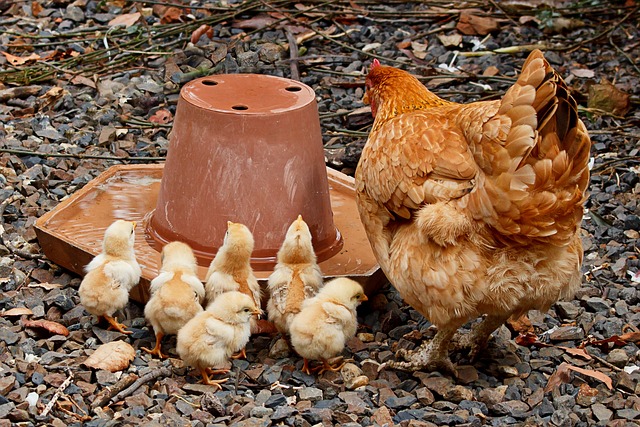
Recap of the step-by-step guide
In summary, successfully introducing new chickens to an existing flock requires careful planning and monitoring. Firstly, it’s crucial to assess the space and resources available, as well as understanding the existing pecking order. Quarantine procedures for new chickens are also essential to prevent the spread of diseases. Gradual introduction, using separate enclosures or fencing off an area, helps the birds adjust to each other’s presence. Throughout the process, monitoring for signs of aggression or conflict is vital. Removing physical barriers and ensuring equal access to food and water indicates the final integration stage. Regular health check-ups and addressing any social dynamics issues ensure a harmonious and thriving flock.
The importance of patience and monitoring
When introducing new chickens to an existing flock, patience and monitoring are key. It’s important to understand that the process may take time and require careful observation. By being patient, you allow the chickens to establish their pecking order and gradually integrate into the flock. Monitoring their interactions is crucial to ensure the safety and well-being of all the chickens involved. Watch for signs of aggression or dominance and be prepared to separate any birds that are not getting along. With patience and close monitoring, you can successfully introduce new chickens to your existing flock and create a harmonious and productive environment for all.
Tips for a successful integration process
To ensure a successful integration process when introducing new chickens to an existing flock, there are a few key tips to keep in mind. First, carefully assess the space and resources available to ensure there is ample room for all the chickens. Second, understand the pecking order and be prepared to manage any potential conflicts. Third, implement a quarantine period for new chickens to prevent the spread of disease. Fourth, gradually introduce the newcomers to the existing flock, supervising their interactions closely. Finally, monitor the flock’s behavior over time, addressing any aggression or issues that arise. Patience, monitoring, and proper management are vital for a harmonious and productive integration process.
CONCLUSION:
In conclusion, introducing new chickens to an existing flock requires careful planning and consideration to ensure a successful integration. To avoid potential problems, such as aggression and territorial disputes, it is important to quarantine new birds before introducing them gradually to the established flock. This process allows them to acclimate and minimizes the risk of disease transmission. Adding new chickens can bring value in terms of increased productivity, genetic diversity, and social dynamics within the flock. Remember, patience is key during the integration process, and providing adequate space, food, and water for all chickens is crucial for their well-being. By following these steps, you can successfully add pullets to your existing flock and enjoy a harmonious and thriving chicken community.




